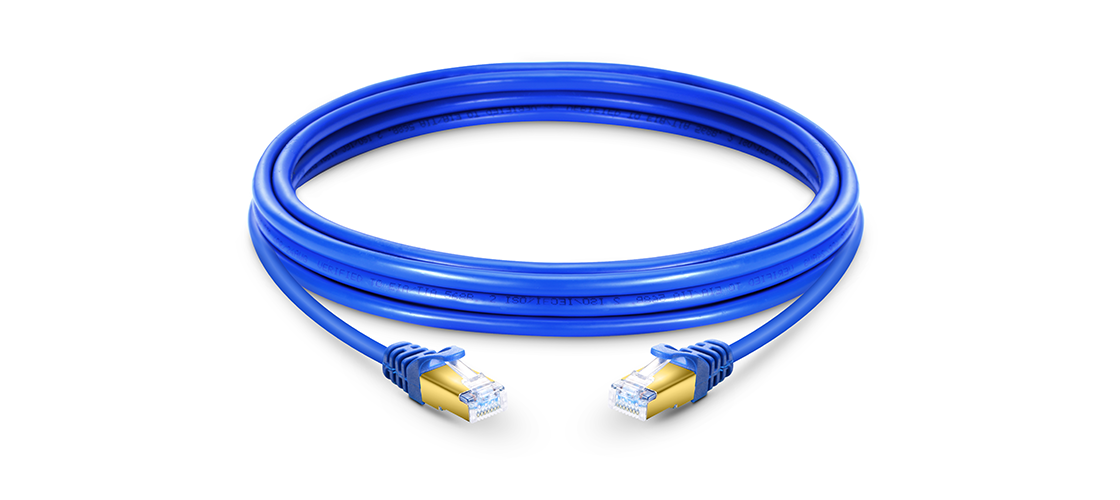Cat7 Ethernet Cable: Is It Worth The Extra Cost?
Nowadays, homes and businesses are operating on either a wired network connection or a wireless connection. Wired connections are usually faster than wireless connections and have lower latency. Both types of network hardware continue to advance, allowing users to benefit from faster speeds.
This might not be a big deal for the home network where the internet connection speed is usually the bottleneck. But businesses need to consider what kind of cables they are using. When using different types of Ethernet cables, the network speeds differ.
Let’s start with the most standard types of Ethernet cables. Most of the new ones that are purchased in stores or bundled with equipment are probably recent enough that you do not need to worry. Companies that are still using older Ethernet cables they’ve had for a long time more than likely need to upgrade to a newer version.

Cables are not a brand name or generic; they are separated into different standard categories. The most common include Category 5, Category 5e, Category 6 and Category 6a. The newest cable category is 7. Each cable is backward compatible – meaning, you can plug a newer cable into a device created for a slower cable, and you will not have any compatibility problems.
Each newer cable standard allows the user to get higher possible speeds with lower crosstalk. This enables the user to get those fast speeds, even with longer cables. When compared at lengths of 100 meters of cable, the following numbers show the difference in Ethernet cable categories:
- Cat5 ethernet cable is typically too slow for business networks, allowing the user to get up to 100 Mb/second speed at 100 Mhz
- Cat5e network cable allows up to 1 Gb/s internet speed with 100 Mhz
- Cat6 ethernet cable allows up to 1 Gb/s, but cable lengths up to 55 meters can get internet speeds of 10 Gb/s at 250 Mhz
- Cat6a ethernet cable can get speeds up to 10 Gb/s, even at 100 meters of cable length, operating at 500 Mhz
- Cat7 ethernet cable is the newest cable category, operating at speeds of 10 Gb/s at 100 meters of cable and transmitting frequencies up to 600 Mhz.
The Cat5 cable was the standard in 1995, Cat5e was standard in 2001 and Cat6 came out in 2002. The Cat6a has been around since 2008. Most businesses still have no need for updating their hardware to Cat7 Ethernet cable, much less the Cat7a or Cat8 cables that were first released in 2010 and 2013.
Cable can only allow the power and speeds of whatever equipment and internet type it is working with. Getting a faster cable will not change the internet speed if the equipment is set for a slower speed or the internet speed package is slower.
Most Cat5 and Cat5e cable should be changed out for a business set up. We believe that upgrading as high as Cat6a ethernet cable will be necessary for quite some time. Until companies need the speed, have the equipment to handle the speed and get an internet package that requires faster channels, the Cat7 ethernet cable’s full potential will simply not be used. This makes it an expensive, unnecessary upgrade. Purchasing and running cable is not a small expense, so companies should try to pick their cable in line with what they need currently and will need in the near future.
Another difference in the cables will be the way the wires are used within the cable. The solid cable uses one single piece of copper for an electrical conductor. The stranded cable uses multiple (and thinner) copper cables twisted together for the electrical conductor. This makes the stranded cable more flexible, perfect for navigating a complex space. The solid cable is far less flexible making it ideal for permanent installation in the walls or outdoor.
Be sure to make clear of the features and difference between each type of Ethernet cables before finally selecting the one for your home or business project. Hope the information in this article could be helpful or a guide for you when you are confused about which Ethernet cable to choose.
